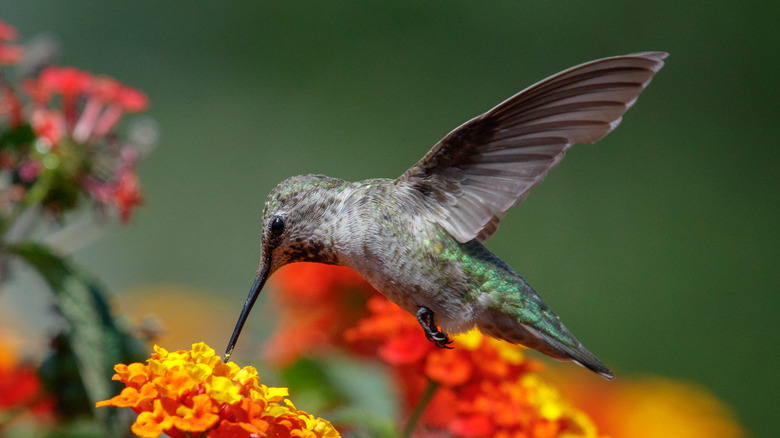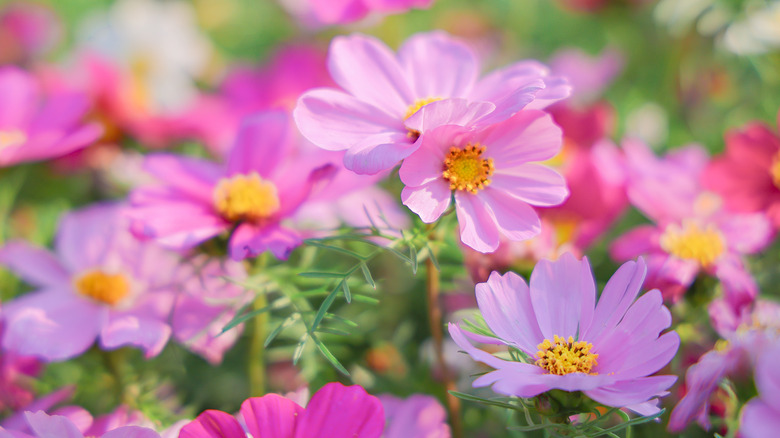Not Only Can These Flowers Self-Seed, But They Also Attract Hummingbirds
When the warmth of spring approaches, gardeners are at their local nurseries, buying everything they need to make their summer garden a reality. This includes selecting annuals — ideally planted once the last frost has passed — and figuring out where to plant them for maximum impact. But if you want to avoid the spring rush at the garden center, consider choosing annuals that can self-seed year after year, essentially doing your job for you. Opting for self-seeding flowers will give you a yard full of effortless color while also saving you time and money. These types of annuals drop their seeds before the plant dies, sowing next spring's batch of flowers. Self-seeding annuals are the gift that keeps on giving.
If you are an avid gardener and a hummingbird enthusiast, you'll delight in knowing that there are annuals that will not only provide your yard with recurring beauty, but they also will attract the tiny birds to your garden. Although there are many flowers that reseed themselves, cosmos (Cosmos bipinnatus) and calendula (Calendula officinalis) are two that are known to be favorites of these beloved creatures. Choose varieties that produce red, orange, or pink flowers, as those are the colors that are most attractive to hummingbirds.
Growing cosmos and calendula
Both of these flowers are plants in the Asteraceae, or daisy, family, suitable for USDA Hardiness Zones 2 through 11. They're popular choices for mixed beds and borders, thriving in well-drained soil and full sun, although calendula likes some afternoon sun in climates that are too hot. Give them too much shade, though, and you'll find them getting a bit leggy. You can start these flower seeds indoors about 6 to 8 weeks before the last frost is anticipated, or simply sow them in your garden shortly before the final frost. Calendula works well in the front areas of borders, with a shorter height of 1 to 2 feet and a spread of 1 to 2 feet. Multiple rows of short yellow and orange petals create mounding blooms.
Cosmos add a wild delicateness to the garden with their feathery foliage supporting single rows of petals. The blooms typically come in red, pink, or white, complemented by a small bright yellow center. They can grow from 1 to 4 feet, with a spread of 2 to 3 feet. A less common variety, the Klondike cosmos (Cosmos sulphureus), will add orange and yellow to your garden and more height, with their maximum reach of 6 feet.
Throughout the growing season, deadhead the cosmos and calendula to encourage more growth. But as the summer winds down, let the flower heads dry up and break open. Their seeds can then scatter into the soil for the next spring.

